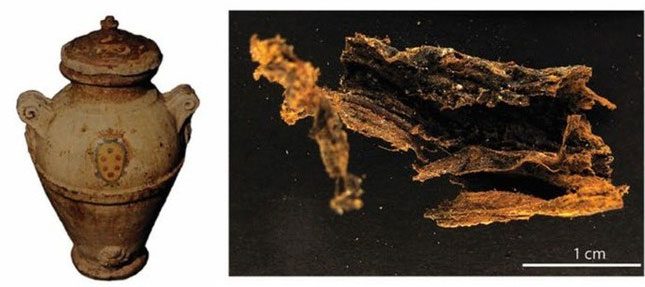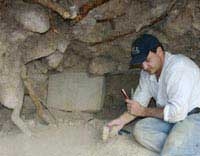Many members of the renowned Medici family, interred like royalty in the Basilica of San Lorenzo (Florence, Italy), may have died from the same cause, a factor that continues to haunt humanity to this day.
A research team led by Dr. Albert Zink, Director of the Italian Institute for Mummy Studies, analyzed the tissue samples stored in jars within the Medici family’s 500-year-old tomb to investigate the mysterious deaths that have plagued this powerful dynasty.

Jar containing organs with a 500-year-old “killer” revealed under a microscope – (Photo: Emerging Infectious Diseases).
The Medici family was a powerful banking dynasty during the Renaissance, extremely wealthy and infamous for power struggles, conspiracies, and assassinations, sometimes romanticized in literature.
They rest in an opulent ancient tomb, described as fit for kings, within the Basilica of San Lorenzo, a famous landmark.
However, new analyses have revealed a “killer” lurking in the shadows that led many prominent figures in this family to succumb at a young age.
According to a recent publication in the medical journal Emerging Infectious Diseases, this “killer” may have originated from the family’s hunting grounds. Hunting was a favored pastime among the European elite, and both men and women of the Medici enjoyed this activity.
The culprit is Plasmodium falciparum – a highly virulent malaria parasite.
This is the first time this pathogen has been directly observed under a microscope in tissue samples from an unidentified individual, as most of the jars containing organs do not specify the names of the individuals they belonged to.
According to Live Science, the research team believes that if one individual had malaria, it is highly likely that many others in the tomb were also infected and died from similar causes, as it is an extremely dangerous disease that continues to be a haunting killer for humanity.
They hope that deeper analyses of the tissue samples could help answer lingering questions.
Regardless, these findings suggest that the virulent malaria parasite may have been more widespread in Italy than previously thought, even in temperate climates. It was once believed that Plasmodium falciparum was limited to tropical regions, while malaria in Europe was caused by a less virulent strain.





















































